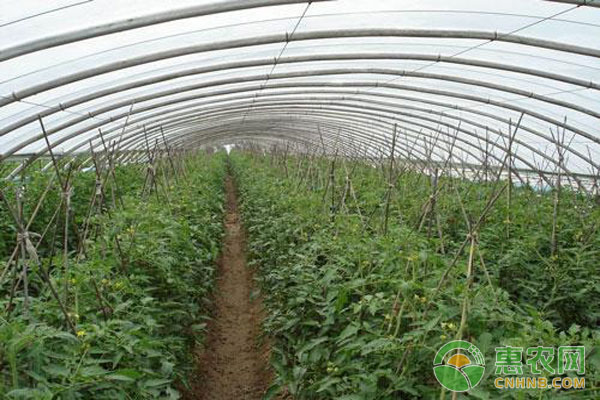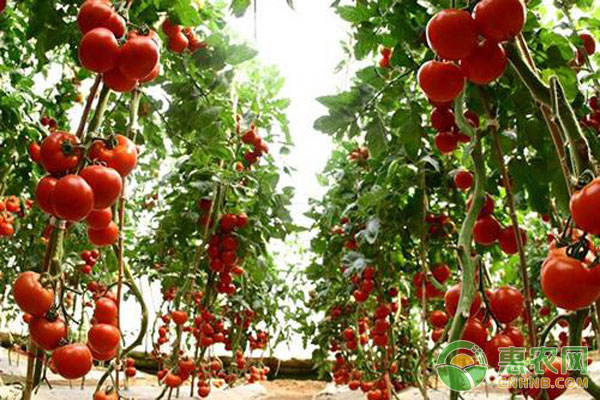High-yield planting and cultivation techniques for tomato greenhouse
Tomato is a kind of vegetable that is often grown in the solar greenhouse. However, it is not easy to achieve high yield and high efficiency. Now combined with the experience of some vegetable farmers, it summarizes several problems that need to be paid attention to in high-yield tomato cultivation. First, prevent soil-borne diseases In the process of tomato planting, there are a variety of soil-borne diseases, such as stem-based rot, root rot, ulcer disease, blight, etc. Once these diseases occur, it is difficult to control, causing great harm to tomato production. In response to these soil-borne diseases, it can be prevented and eliminated by soil disinfection, but few vegetable farmers do it. It is too late when soil-borne diseases occur. Generally, soil disinfection is carried out in the high temperature shack in July and August each year. After the vegetables are pulled, the air outlets are closed, and the air is suffocated to kill the bacteria and insects in the greenhouse and the soil surface. Organic fertilizer (chicken manure, cow dung, chitin organic fertilizer) is all placed in the shed, and the soil is turned deep, and the ploughing reaches 30 to 40 cm. After the whole mulch is covered with the mulch, the water is poured into the raft, and then the greenhouse is vented. Closed, high temperature treatment for 20 to 30 days, greenhouse air temperature of 60 ° C ~ 70 ° C, soil temperature of 55 ° C ~ 60 ° C, so that the soil surface and deep layers of bacteria and nematodes can be killed, thus achieving full sterilization effect. Second, strict prevention of viral diseases First of all, to ensure that the seedlings are seedlings without virus disease, can not be infected with viral diseases during the breeding process; secondly, the seedlings must be planted in a greenhouse without virus disease, and the virus-borne vectors of soot and aphids cannot be exposed to tomato plants. The greenhouse for nursery and planting tomatoes is thoroughly disinfected and sterilized. All vents are tightly covered with insect nets. The greenhouses are used as curtains to ensure that the curtains are tightly closed. The yellow plates are hanged at regular intervals in the greenhouse, and the number of white mites is removed through the yellow plates. How much is needed to determine the appropriate time to spray the agent. Third, reasonable arrangements for the mouth There are 3 sowing cornices in the greenhouse tomato: autumn and winter glutinous rice, winter spring glutinous rice and winter glutinous rice, what kind of gargle is chosen by the vegetable farmers, depending on the heat preservation performance of the greenhouse. For greenhouses with a temperature below 6 °C in winter, it is best to choose winter and winter in the autumn and winter, and the greenhouse with better insulation can arrange wintering. Choose to plant two greenhouses, autumn and winter sown in late June, planting in July next month, harvesting in mid-October, and pulling around before and after the Spring Festival. Winter and spring hoes are planted in early November, planted in mid-December, and listed in mid-March of the following year, which can be harvested from June to July. Overwintering is planted in late September to early October, planted in early November, and pulled to June in the following year. Overwintering requires good greenhouse insulation performance and high management technology. It is recommended to plant autumn and winter sorghum and winter sorghum. Although the benefits are less than that of wintering, the safety is strong and the benefits are reliable. Vegetable farmers can choose gargle flexibly. Fourth, do a good job of planting and watering When the tomato is planted, it must be watered first. After the water is infiltrated, the seedlings are inserted according to the water line. This kind of planting method, especially the autumn sorghum, must be used. Because the soil temperature is high in autumn, the soil temperature is lowered by watering, so that the tomato root system is made. Not subject to high temperature hazards, does not hurt the roots, is not susceptible to disease. After the first water is poured in autumn and winter, the second water should be followed by two days, and the third water should be poured after 7-10 days. Generally, before the first spike is opened, water should be watered for 3 to 4 times. Reduce soil temperature and allow roots to grow rapidly. When planting winter and spring sorghum, it is necessary to lightly plant the water, and then the seedlings will be poured when the seedlings begin to grow. Planting depth should be appropriate, do not bury the stem. Should not be too deep, should not be too shallow, too deep root development is slow, too shallow surface temperature is higher, should be hot. When burying the soil, be careful not to bury the stalk, otherwise the dead tree will easily occur. After the stalks are lignified and buried, a large number of adventitious roots can be produced to accelerate the growth rate of the plants. In autumn and winter, you can use sorghum, winter sorghum and winter sorghum can be cultivated with sorghum. Therefore, planting in the tomato greenhouse requires careful care and management with the most scientific technology! Only through favorable scientific management methods can tomato high-yield can be grown in the greenhouse. Personal Care,Hair Conditioner,Body Wash Shower Gel,Moisturizing Shower Gel Wuxi Keni Daily Cosmetics Co.,Ltd , https://www.kenidailycosmetics.com
